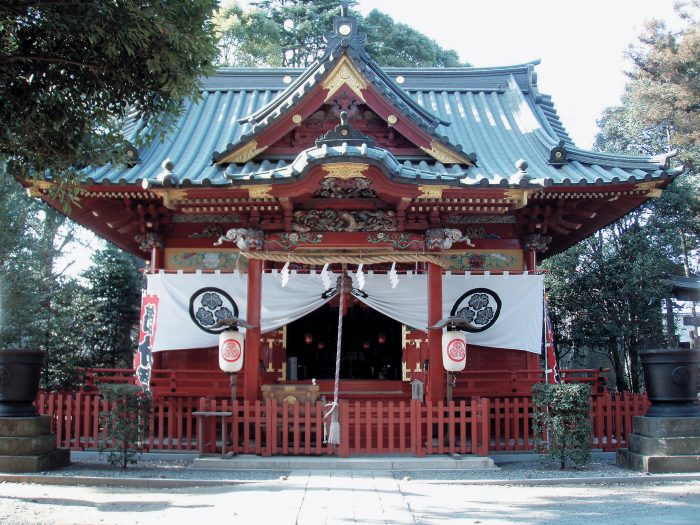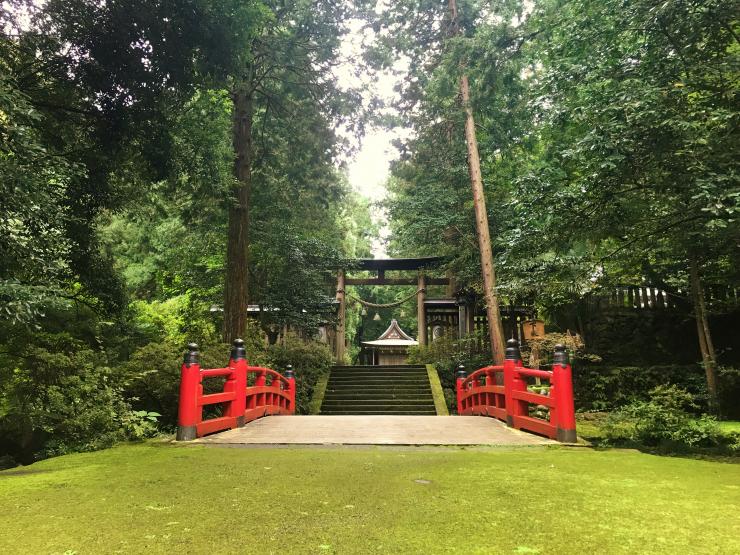


Kanasana Shrine
An ancient sanctuary where the sacred mountain itself is the object of worship.
A rare and ancient shrine in Saitama that preserves a primitive form of Shinto. It has no main hall ('honden') because the mountain behind it, Mt. Mimuro, is revered as the kami's body.
History of the Shrine
Kanasana Shrine is a powerful link to the very origins of Shinto, a faith rooted in animistic nature worship. Its founding predates written history. For millennia before permanent shrine buildings became commonplace, people in Japan worshipped impressive natural features—towering mountains, ancient trees, dramatic waterfalls—as 'kannabi', places where the kami were believed to dwell. Kanasana Shrine is a rare and precious example of this 'kannabi shinko' that has survived into the modern era.
The shrine has no 'honden', the building that typically houses a sacred object ('shintai') representing the kami. Here, the object of worship is Mt. Mimuro itself. Prayers are offered not to an effigy within a building, but directly to the living presence of the mountain. This practice offers visitors a profound and direct connection to the ancient Japanese worldview, where the divine was not separate from the natural world, but an integral part of it.
The Enshrined Kami
The kami of Kanasana Shrine is a complex of deities from the 'Kojiki' myth cycle, including the sun goddess Amaterasu and the storm god Susano'o. However, the true essence of worship here is directed at the 'kannabi'—the sacred mountain itself as the vessel or body of these divine forces. The name of the mountain, Mt. Mimuro, can be interpreted as 'sacred dwelling'.
Worshipping at Kanasana is not about praying to a specific personality-driven god for a particular blessing. It is about connecting with the raw, untamed, and life-giving spirit of the land. It is a prayer for purification, for a harmonious relationship with nature, and for protection from the calamities that nature can unleash. It is an experience of Shinto in its most elemental form.
What to See
The primary point of interest is the 'haiden' (worship hall) and, behind it, the 'yohaijo', a designated spot from which to pray directly to the sacred mountain. The absence of a main hall behind the worship hall is the shrine's most significant and thought-provoking feature. The surrounding forest is dense and ancient, filled with rare plants, adding to the sacred and mystical atmosphere.
Another important feature is the nearby 'Kagamiiwa', a large, smooth rock face that is also considered a sacred object. The shrine's treasure hall contains artifacts that have been excavated from the area, including ancient pottery and tools, hinting at the long history of human settlement and worship in this sacred place.
Major Festivals
The shrine's festivals are deeply connected to the agricultural cycle and the local community. The 'Reitaisai' (Annual Festival) in April features processions and traditional performances. A fire festival is also held in the winter, a prayer for purification and renewal. The rituals at Kanasana often have a more rustic and ancient feel compared to those at more famous shrines, reflecting their deep roots in the local land.
Support Kanasana Shrine
Your participation helps preserve this sacred site for future generations. Every digital offering contributes to real shrine preservation efforts across Japan.
By making an offering, you become part of a global community honoring Japanese spiritual traditions and supporting the cultural heritage that has been cherished for centuries.